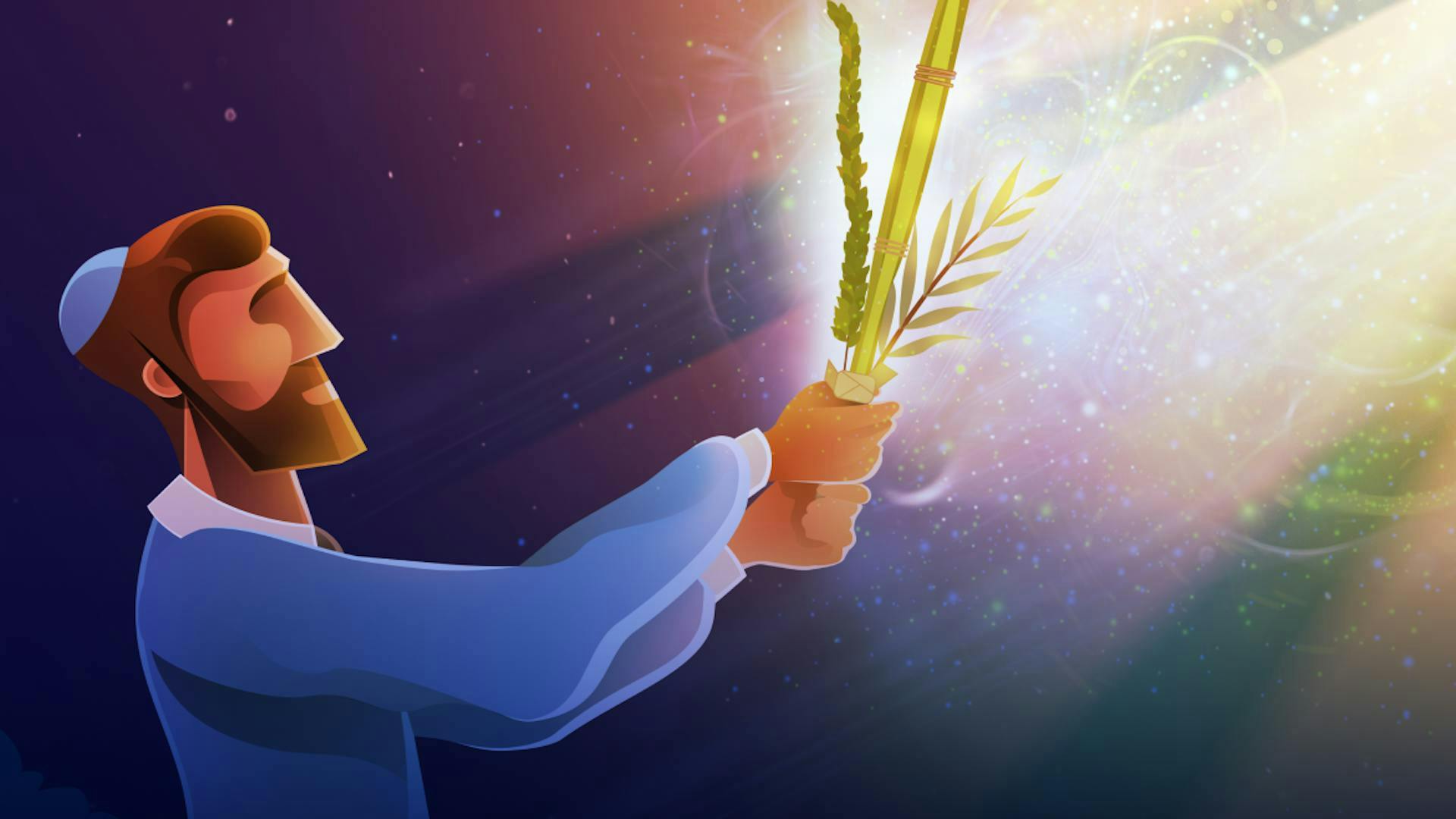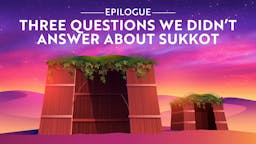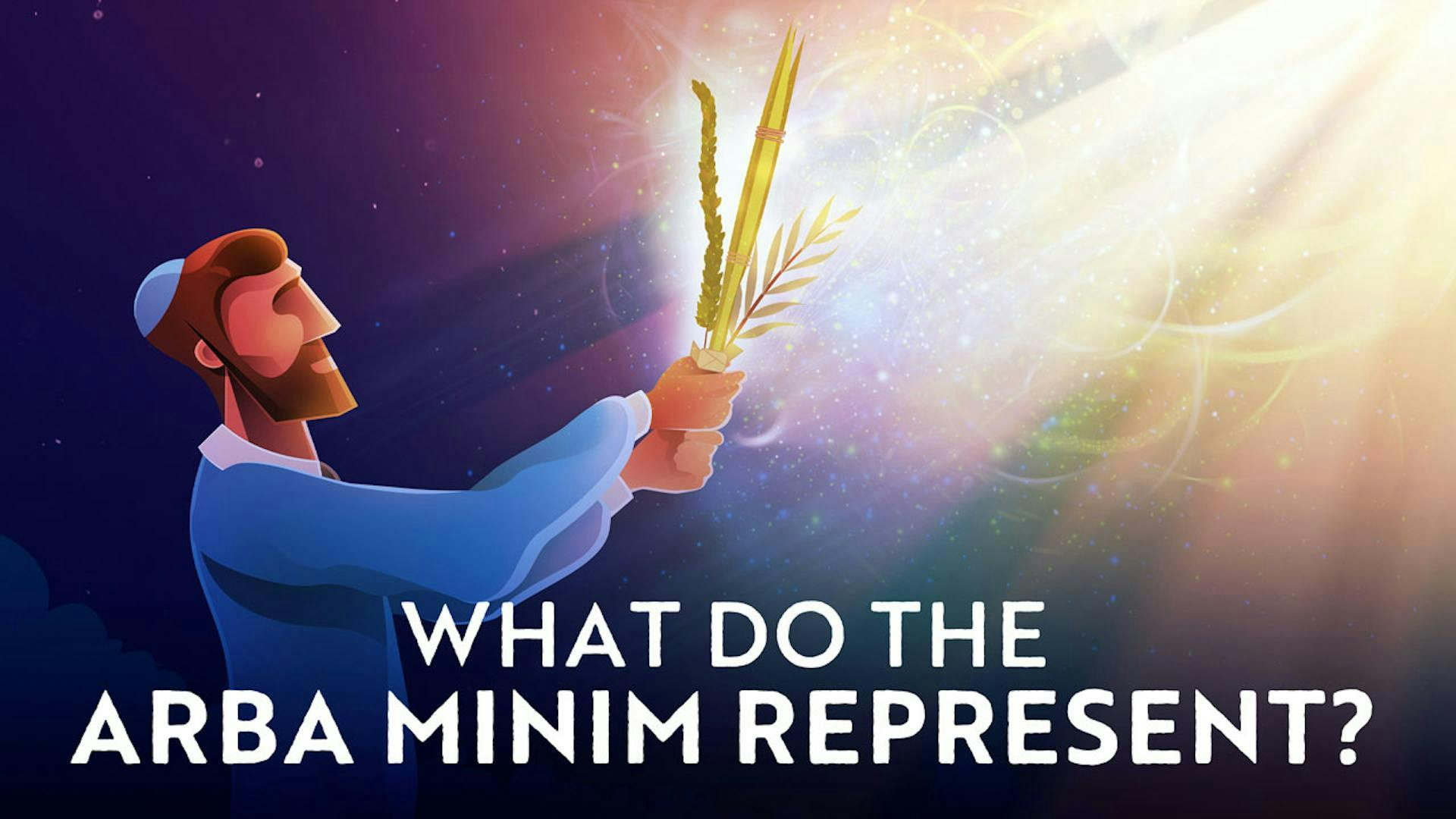The Connection Between Joy And Sukkot
Why is Sukkot a Happy Time?
By Talya Goldman | 8 September 2024 | 5 Minute Read

The Three Biblical Harvest Festivals
Jewish holidays are often humorously summed up as celebrations of survival, salvation, or freedom from enemies. So when a holiday like Sukkot comes along—where the main theme is seemingly joy for joy’s sake—it feels like we embrace the celebration with even greater enthusiasm.
What is the Season of Joy in Sukkot?
Sukkot, also known as zman simchateinu ("the season of our rejoicing") is marked by the commandment to rejoice before God for seven days. But what is it about this season that brings such profound joy?
Sukkot is the third and final holiday of the three harvest festivals detailed in the Torah, alongside Passover and Shavuot. In Parshat Re’eh (16:14), we are instructed, “You shall rejoice in your festival.” On all three of these holidays, we celebrate with joy and thank God for the abundance He’s blessed us with. However, Sukkot carries an extra layer of happiness. It marks the culmination of a yearly spiritual process—after repenting during Elul, Rosh Hashana, and Yom Kippur, Sukkot allows us to celebrate a fresh beginning with the winter planting season.
But what sets Sukkot apart as a uniquely joyful time, even when compared to Passover, which celebrates our freedom, or Shavuot, which commemorates the giving of the Torah?
Why is Sukkot Joyful?
To fully understand why Sukkot stands out as a time of such boundless joy, we need to turn to Parshat Emor. There, the Torah outlines a unique three-stage process of Sukkot, which is absent from the other two harvest festivals:
- We offer numerous sacrifices to God (Leviticus 23:37-38).
- We gather the arba minim (four species) and present them before God (Leviticus 23:40), with the commandment to “rejoice before your God for seven days.”
- We dwell in the sukkah for seven days (Leviticus 23:42-43).
It is in the second stage—gathering the four species—that we are explicitly commanded to rejoice. So, what is the deeper joy tied to this ritual? What does God want us to discover through this ancient practice?
The Joy of the Arba Minim
How do the arba minim add to the joy of Sukkot?
The Midrash in Vayikra Rabba offers a fascinating explanation of the joy behind the arba minim. It raises the question: why so many rituals during Sukkot? Isn’t this joy excessive? The Midrash answers that the arba minim serve as a symbol of victory. Just as a victor holds up a symbol of triumph, the Jewish people lift their lulav and etrog after Yom Kippur, signifying that they have emerged victorious in God’s judgment.
This act is more than just ritual; it’s a powerful declaration of resilience and joy, symbolizing the Jewish people’s eternal bond with God. As we approach Sukkot this year, following the tragic events of October 7th, this message of joy intertwined with resilience feels more meaningful than ever.
A Deeper Look at the Arba Minim and Sukkot’s Joy
In Aleph Beta’s series “What Do the Arba Minim Represent,”scholars Imu Shalev and Ami Silver explore the contrast between two moments of "taking" in the Torah. In Bereshit, Eve takes the forbidden fruit, drawn by its beauty and appeal, leading to eternal sadness: women endure pain in childbirth, and men toil in labor.
On Sukkot, however, we are commanded to take the arba minim—not with shame, but with joy. The contrast is striking. In Genesis, taking leads to separation from God. In Leviticus, taking becomes an act of celebration and connection. The ultimate message is that worldly pleasures are not forbidden but are meant to be enjoyed with the recognition that they are gifts from God. Sukkot reminds us to embrace joy, rooted in gratitude for the bounty and blessings we receive.
Dive Deeper
Sukkot’s rituals beautifully illustrate the deep connection between the holiday and the essence of true joy. More still, the commandment of taking the arba minim serves as a symbol of our eternal existence as a people, inviting us to fully embrace and appreciate God’s blessings. To dive deeper into these themes, explore the following resources:
- Webinar with Rabbi Fohrman: Explore the deeper meaning of Sukkot in “Is Hoshana Rabba the Key to Understanding Sukkot?” Rabbi Fohrman unpacks the fascinating Biblical language and themes surrounding the holiday.
- “How And Why Do We Celebrate Sukkot?” In this study, Rabbi Fohrman delves into the reciprocal nature of our relationship with God, exploring both God’s faith in us and our faith in Him.
- A Book Like No Other: Don’t miss Season 1 for an in-depth look at the Garden of Eden and how its themes resonate throughout the Torah.
Sukkot Videos

The Hidden Meaning Of Sukkot
Video • 30 min
Why do we celebrate Sukkot? Because the Israelites slept in huts in the desert after fleeing Egypt… right? Well, what if that answer is incomplete? What if the Torah offers us a deeper story about the meaning of this holiday…and it’s hiding in plain sight?

Is Hoshana Rabba The Key To Understanding Sukkot?
Video • 1 hour, 18 min
In this webinar, Rabbi Fohrman dives even deeper into the question: Wait.. why do we celebrate Sukkot, to offer a fascinating explanation that not only sheds new light on the holiday of Sukkot but on the often overlooked significance of its seventh day: Hoshana Rabba.

The Deep Connection Between the Biblical Holidays
Video • 12 min
There are several holidays mentioned in the Bible, including the Three Pilgrimage Festivals: Passover, Sukkot and Shavuot. What makes these days more significant than any other holiday? The Bible seems almost elusive when describing these holy days. Join Rabbi Fohrman as he uncovers the secret theme that permeates these days, allowing a deeper understanding of the holiday cycle to emerge.
More Sukkot Content
What is Aleph Beta?
Aleph Beta is a unique kind of Torah library. Led by our founder, Rabbi David Fohrman, we are dedicated to high-level, textual Torah learning for adults that is intellectually and spiritually sophisticated, that enlivens your Jewish practice and helps you forge a deeper connection to God. Whether you’ve been learning in yeshiva for years or you’re just beginning your Torah journey, you’re sure to find something meaningful and surprising waiting for you here.
Browse our library of over 1,000 beautifully produced animated videos, podcasts, deep dive courses, and printable guides. Topics include the weekly parsha, Jewish holidays & fast days, laws & mitzvot, prayers, relationships, big philosophical ideas and more. Have something to say at the Shabbos table that will amaze your family and guests and bring deep meaning into their lives.


